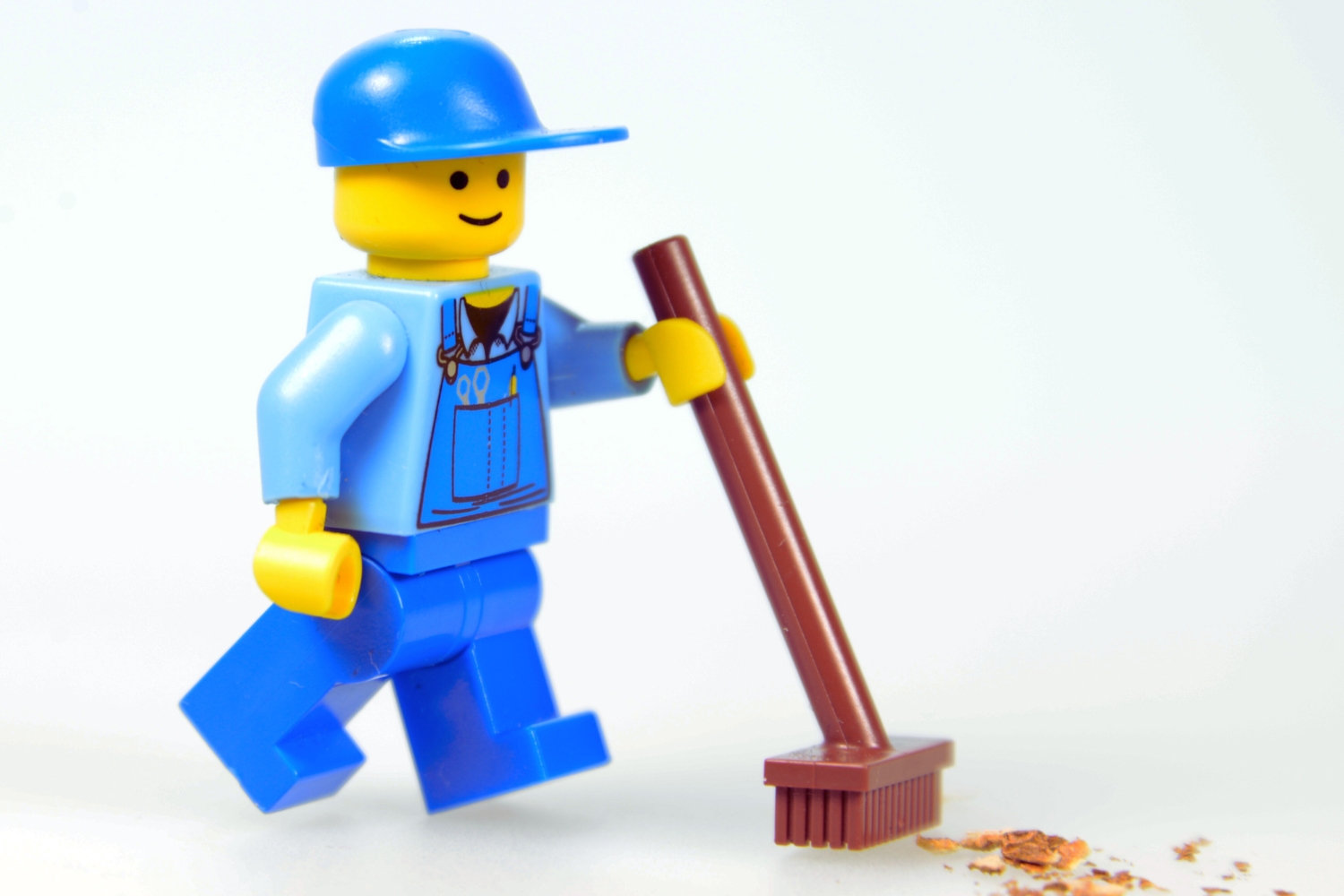
‘Broom Clean’ Condition: What to Clean Before You Move

When it comes to moving out of your current rental, leaving it in good condition goes beyond common courtesy— it’s your responsibility. A thorough cleaning demonstrates your respect for the property and future tenants. For renters, it also plays a crucial role in ensuring the return of your security deposit. And, if you’re selling your home, leaving your property broom cleaned can prevent any last-minute hiccups in the sale.
Many contracts stipulate that property should be left in broom clean condition— a notion that puzzles most. After all, you can have a room full of people, all with their own definition of clean.
We’re here to break down the definition of broom clean and give a rundown of what you need to do to get the job done.
What is broom clean condition?
Broom clean condition refers to the level of cleanliness that is often expected when vacating a property, whether you’re moving out of a rental or selling your house.
While it doesn’t require a deep clean or a pristine appearance, it does require you to leave the rental in a condition that is ready for the next tenant to move in without the need for additional cleaning. This means removing dust, dirt, and debris that may have accumulated during your tenancy— and, typically, this job requires a little more than just a broom.
Thinking About Buying Your First Home?
Learn more about your financing options with Amplify Credit Union.
Broom Clean Condition for Renters
For renters, the concept of broom clean condition is typically more than just sweeping up dust and dirt.
Ultimately, renters should leave the property in the same condition as when they first moved in, minus any expected normal wear and tear. Failure to do so can result in a withheld security deposit, difficulty obtaining rental references, or even legal consequences.
Broom Clean Condition for Sellers
For home sellers, broom clean is a little different.
For one, the buyer doesn’t have any security deposit, nor can they bill the seller for any costs associated with having the home cleaned. Because of this, the cleaning is seen more as a courtesy.
It’s always best to leave the house clean and tidy, and hiring a professional to get the space ready for the new owners is a nice touch. At minimum, all belongings should be removed from the house, including things like trash, extra cleaning supplies, and tools. Unless directly stated in the contract, there is usually no specific cleaning standard to meet before the house changes hands. That being said, not meeting a buyer’s expectations during the final walkthrough can hold up the sale, causing a headache for the seller.
Preparing to Broom Clean
Before you embark on your cleaning journey, it’s essential to gather all the necessary cleaning supplies. Here’s a basic list to get you started:
- All-purpose cleaner
- Glass cleaner
- Disinfecting wipes
- Baking soda
- Vinegar
- Microfiber cloths
- Paper towels
- Scrub brushes
- Mop and bucket or Swiffer
- Vacuum cleaner
- Rubber gloves
Having these supplies ready and on hand will ensure that you’re ready to tackle everything on your to-do checklist.
Broom Clean Checklist
Use the following checklist as a reference while cleaning your rental. This list outlines the basic tasks to complete in each room:
- All rooms
- Remove belongings from all rooms
- Take out trash
- Remove nails/screws from walls and patch holes
- Dust ceiling fans and vents
- Dust/wipe down baseboards
- Living room
- Dust surfaces and clean windows
- Vacuum carpets or sweep floors
- Kitchen
- Empty and clean refrigerator
- Wipe down countertops and cabinets
- Clean the stove, oven, and microwave
- Sweep and mop the floor
- Sanitize and drain garbage disposal
- Bathrooms
- Scrub the toilet, sink, and bathtub/shower
- Clean mirrors and countertops
- Wash, rinse, and dry shower doors
- Bedroom
- Dust surfaces and clean windows
- Vacuum carpets or sweep floors
- Empty and clean closets
- Other
- Clean the entryway and hallway
- Check and replace lightbulbs if necessary
- Sweep or clean outdoor areas if applicable
- Replace air filters
- Replace batteries in smoke detector, if necessary
What is considered normal wear and tear?
It would be unreasonable for a landlord to expect a property to be in the exact condition at move-out as when the tenant moved in. It is understandable that materials and appliances wear out over time naturally. The state of Texas does have a property code and specific guidance for landlords and tenants. We’ll leave the legal interpretation in the hands of lawyers and other professionals, but here’s some general advice.
Examples of normal wear and tear include:
• Gently worn carpets
• Cracks in the wall due to settling of the foundation
• Faded flooring or wall paint due to sunlight exposure or deterioration
• Sagging or warped cabinetry from use over time
• Old plumbing issues like stoppages or rust
Things that are NOT covered under the definition of normal wear and tear include incidents like:
• Stained or burned carpet
• Holes in the wall from abuse or neglect
• Damaged paint jobs from owner-caused water damage or negligence
• Cabinet doors that are broken or ripped from hinges
• Plumbing issues due to misuse like pouring grease down the sink, flushing non-flushable items, etc.
If you have any problems in your apartment due to a spill, accident, or neglect, you should make repairs, if possible. Otherwise, the repair costs will likely come out of your security deposit.
Always Refer to Your Contract
When it comes to leaving a rental property or selling a house, referring to your contract is essential for understanding the condition in which you should leave the property. Here’s why it matters:
- It may clarify expectations: Your contract may provide clear guidelines on the condition you are expected to leave the property in.
- There may be specific stipulations you should be aware of: Contracts may include specific stipulations that go beyond general cleanliness. For example, your contract might require professional property cleaners, carpet cleaners, or other specialized services.
- You can use your move-in/move-out form to guide you: For renters, referring to your move-in/move-out form can help you match the property’s original condition.
Not everyone has the same idea of clean, but when in doubt, put forth your best effort in getting the space ready for the next inhabitant. Use common sense, courtesy, and communication to determine what is an acceptable condition, and all parties will come away satisfied!
